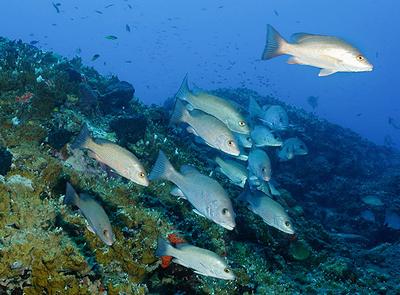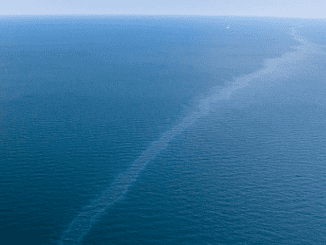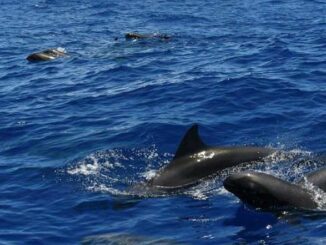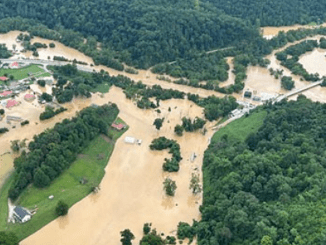
GALVESTON, Texas, January 22, 2021 (ENS) – One of the last acts of the outgoing Trump administration was taken by the National Oceanic and Atmospheric Administration, NOAA, which has tripled the area protected by the Flower Garden Banks National Marine Sanctuary in the Gulf of Mexico.
On January 19, NOAA issued the Final Rule for expansion of the Flower Garden Banks National Marine Sanctuary. This action protects 14 additional reefs and banks, slightly adjusts the boundaries of the sanctuary’s original three banks, and expands the sanctuary from 56 square miles to a total of 160 square miles.

The final rule applies existing sanctuary regulations to all of the new areas, providing protection from the destructive impact of activities related to fishing with bottom-tending gear, ship anchoring, oil and gas exploration and production, and salvage activities on sensitive biological resources.
Flower Garden Banks lies 100 miles off the Texas and Louisiana coasts and is the only sanctuary in the Gulf of Mexico. This ecosystem is created by water from 31 states and Canada, and, NOAA says the existing sanctuary protects some of the healthiest and most resilient coral reef communities in the entire Caribbean and western Atlantic region including salt domes, or underwater mountains, on which the reef-building corals live.
Within the sanctuary, there are coral heads bigger than cars and a bounty of wildlife including whale sharks, sea turtles, mollusks, crustaceans, birds, manta rays, and hundreds of species of fish of commercial and recreational importance.
Still, many oil platforms and pipelines surround the Flower Garden Sanctuary’s reefs and banks, and this expansion is expected to mean increased protection for species and habitats.
The expansion areas will be the subjects of future conservation work and support resource protection, science and research, recreation and stewardship for local communities and the country. Scientists will study the healthy reefs as potential sites to seed and restore reefs in the Gulf of Mexico and the Caribbean in the future.

“Flower Garden Banks National Marine Sanctuary’s expansion is great news for marine conservation in the Gulf. The sanctuary protects incredible coral reefs and an amazing diversity of species. It connects communities to the ocean through educational opportunities including Ocean Guardian Schools and Aquarium-Sanctuary Partnerships,” said Kris Sarri, president and CEO of the National Marine Sanctuary Foundation.
Four aquariums formally partner with Flower Garden Banks National Marine Sanctuary in the Aquarium-Sanctuary Partnerships for America’s Keystone Wildlife Project supported by the National Marine Sanctuary Foundation – Audubon Aquarium of the Americas; Moody Gardens, Inc.; Texas State Aquarium; and Tennessee Aquarium.
These aquariums conduct fish and coral recovery, invasive species and marine debris removal, sea turtle rehabilitation, and maintain mooring buoys that deter boats from anchoring on reefs. Their directors all expressed approval for the sanctuary expansion.
“The advanced growth of the Flower Garden Banks National Marine Sanctuary is a triumph for coral conservation,” said Texas State Aquarium Senior Vice President and COO Jesse Gilbert. “Our aquarists will continue their work to preserve the genetic diversity of the reef to help further restoration efforts. In support of our mission, we will continue to educate and inspire the appreciation for our seas and support conservation.”
Copyright Environment News Service (ENS) 2021. All rights reserved.



